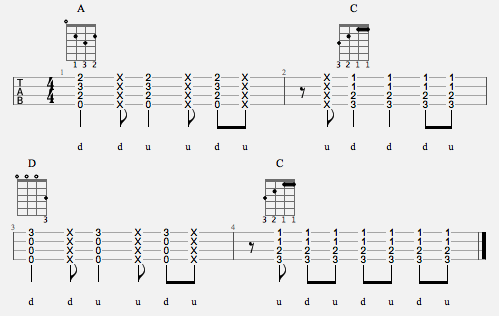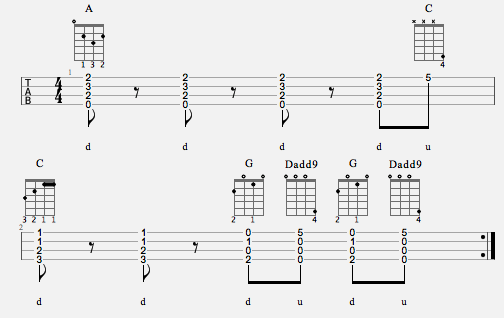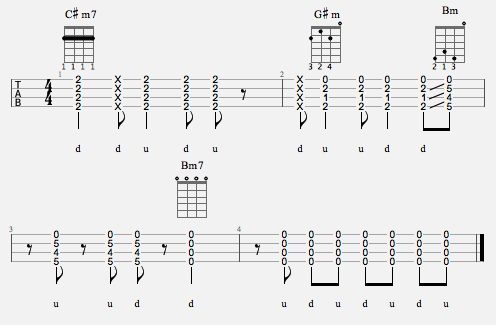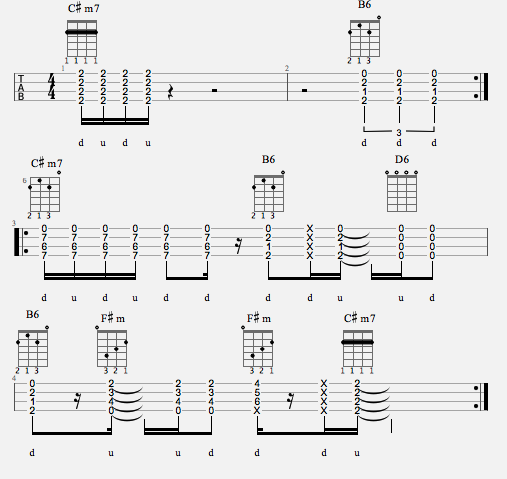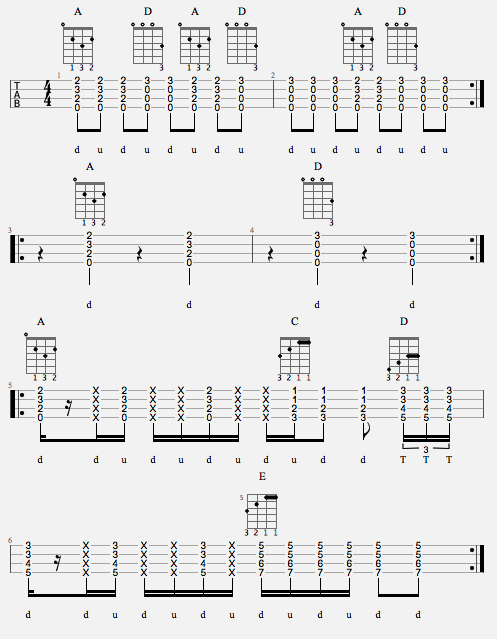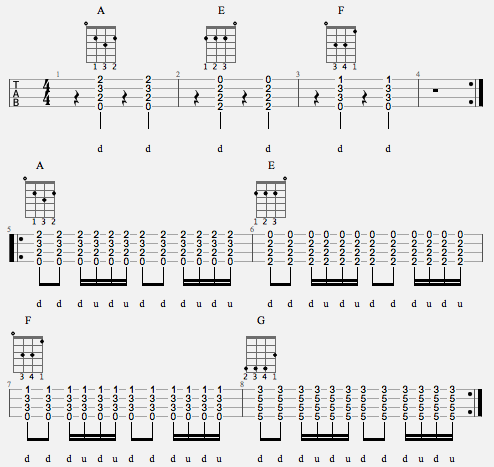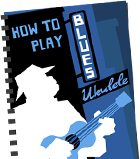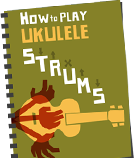It’s been an age since I last updated my About page – I even have hair in that photo. Step 1 in the process: updating the FAQs.
If you’ve got any other questions (or questions about my answers) leave them in the comments below and I’ll do my best to answer those too.
General Uke Questions
What’s the strumming pattern for…?
Try following this post on ukulele strumming patterns.
Which ukulele should I buy?
Depends how much you’re spending. I write a bit about this in the Review section (which I also need to get round to updating).
Can you write up tab/chords for…?
Probably not. I get a lot of requests – too many for me to do. You can maximise your chances by being a regular commenter. If you want to request something anyway, it helps to follow these guidelines.
Ads and Promotion Questions
Can I advertise on your site?
No, I don’t have advertising on the site and don’t have any plans to.
Can I send you my CD?
Thanks, but no thanks – I hate CDs these days. I’m very happy to listen to MP3s though. You can get in touch via the contact page or email me at ukulelehunt@gmail.com
I wanna be on the podcast.
You can find ways to submit and the submission guidelines on the podcast page .
Can you review my music?
Sorry, no. I don’t do that any more. It’s a very easy way to lose friends. I do sometimes do general big-ups for records.
Can you review my book?
Almost certainly. Send me an email.
Can we send you a ukulele to review?
Thanks, but no thanks.
Can you write about my competition/do a competition with us?
No, I’m really bored of ukulele contests and competitions.
Will you feature my band/video/website?
I’m always happy to hear about new ukulele stuff and I’ll certainly mention anything I like. You can get in touch via the contact page or email me at ukulelehunt@gmail.com
Will you mention my gig?
I tend not to feature gigs – my readers are spread around the world so I avoid local stuff unless it’s really big.
Site Questions
Do you know ‘Uke Hunt’ sounds rude when you say it out loud?
I do. I know it puts some people off – that’s the point. If you don’t like bad language and terrible puns, you’re not going to like the site. At all.
What software do you use to make your tabs/chord sheets?
I use Guitar Pro 6 to make the tabs. You can read a full review here: Guitar Pro 6. I do use Sibelius for some stuff as well but I wouldn’t recommend it.
The chord charts are done by an unnecessarily convoluted method involving Pages and Sibelius. I’d recommend using GoChords for more general uses.
There’s a guide to all the stuff I use here.
I’ve bought Ukulele for Dummies, is it worth buying your ebooks?
It’s probably not worth buying How to Play Ukulele Strums or Ukulele 101. There’s much less of a crossover with the other ebooks.
Why didn’t my comment show up? FREEDOM OF SPEECH!
The first time anyone leaves a comment it gets held back for moderation. So give it a little while for me to check. Some times it gets trapped in the spam filter – if you think that’s happened let me know.
If you comment still doesn’t show up ask yourself, “Could that comment have come across a bit dick-ish?” Comment moderation is mostly based on my whims and moods. Whatever I decide, you’re always free to voice your opinions on your own website.
What WordPress theme are you using?
It’s a custom theme by Ben Lew.
About Me
Can I meet you? Do you want to come to…?
I’m really not a people-person. I’ve decided I won’t be going to any ukulele events this year.
You should write a book for schools, you’ll make more money.
I’m not keen on ukuleles being taught in schools at all. I’m anti-school in general. If I have kids they won’t be going to one.
This (not actually a) question is most frequently asked by my mum.
That thing you did/do/said is weird/offensive/stupid.
I know. I can’t help it.
